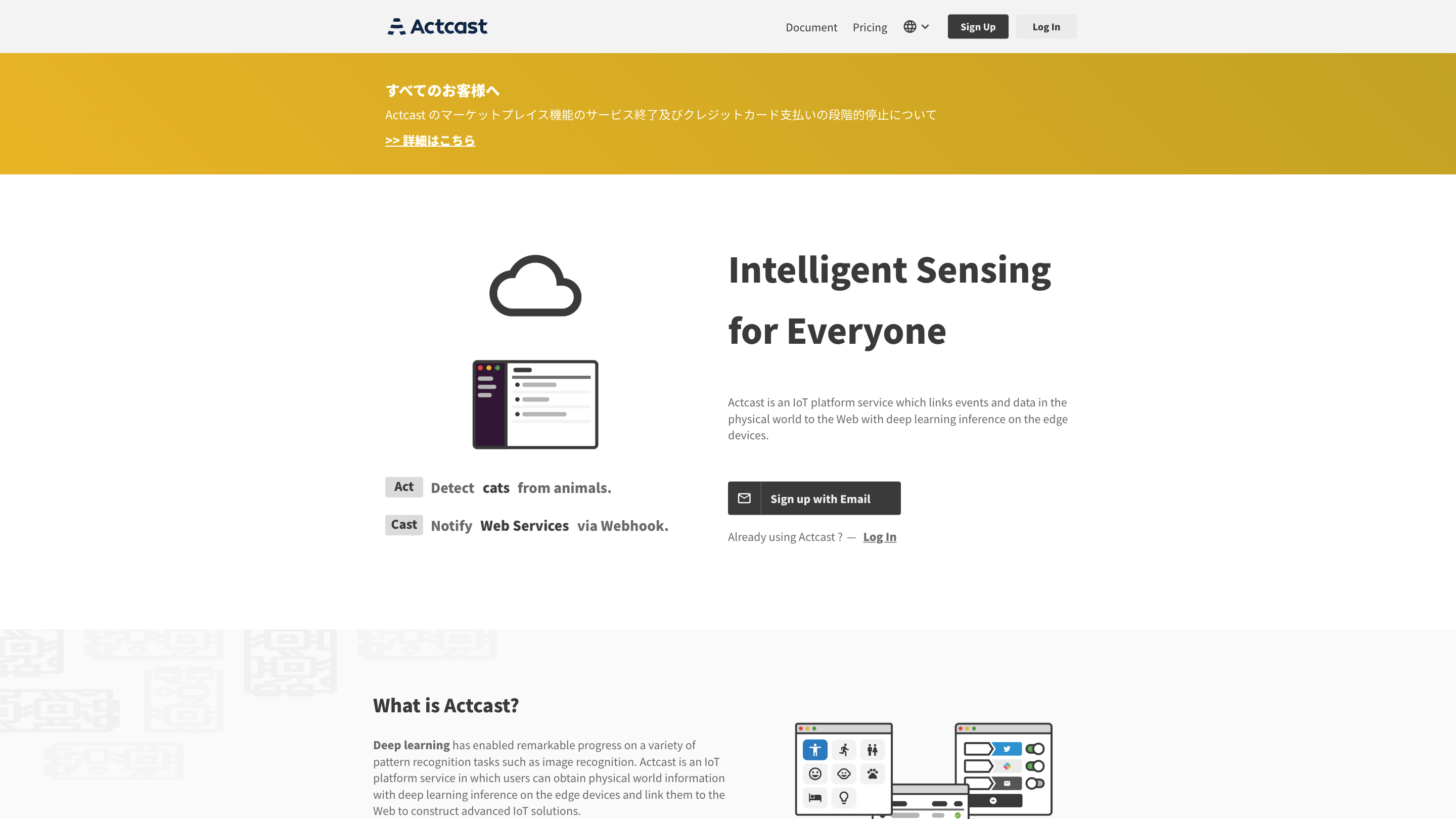Actcast
Open siteIntroduction
IoT platform service for linking events and data with deep learning inference.
Actcast Product Information
Actcast is an IoT platform that connects the physical world with the Web through edge device-based deep learning inference. It enables detection of objects and people in real-world scenes and can notify web or mobile endpoints, enabling smart sensing and responsive applications. The service emphasizes on-device processing to reduce data transfer, lower server costs, and improve privacy by keeping data processing at the edge. Actcast targets developers and enterprises seeking AI/IoT integration, with a focus on rapid deployment, partner ecosystem, and scalable edge AI capabilities.
Key Concepts
- Edge AI Inference: Runs deep learning models on edge devices to extract information from sensor data (images, video, etc.) without sending raw data to central servers.
- Act/ Cast Model: Act detects patterns or events (e.g., person presence, object recognition) and Cast notifies connected web/mobile services or applications.
- Privacy by Design: Data remains on local devices or within trusted edge environments, reducing exposure and transmission risks.
- Enterprise and Partner Ecosystem: Aimed at integrating with partner SDKs, hardware providers, AI vendors, and system integrators to build end-to-end AIoT solutions.
- Accessibility and Cost Efficiency: Designed to lower data transfer costs and server load while supporting affordable edge hardware options (e.g., popular Raspberry Pi devices).
How Actcast Works
- Deploy an edge device with Actcast runtime capable of running DL inferences locally.
- Train or deploy AI models suitable for your sensing tasks (image recognition, anomaly detection, presence detection, etc.).
- Act detects events or objects and triggers a Cast notification to web services, mobile apps, or other endpoints.
- Integrate with partner SDKs or enterprise services to build dashboards, automation, or responsive actions based on edge insights.
This enables developers to collect information from the physical world, connect it to Web services, and create sophisticated AI-enabled IoT solutions while prioritizing privacy and reduced latency.
Partner and Enterprise Programs
- Partnership program offers early access to SDKs for building custom applications.
- A large registry of AI vendors, device manufacturers, and system integrators collaborates to support AI/IoT projects.
- Documentation and resources are available for onboarding, integration, and deployment.
Use Cases
- Smart surveillance and presence detection at the edge with instant web/mobile notifications.
- Edge AI for industrial IoT, reducing data transfer and enabling responsive automation.
- Privacy-conscious deployments where sensitive data remains on-device.
Safety and Compliance Considerations
- Ensure compliance with privacy laws and consent when detecting and notifying about people or sensitive scenes.
- Review data handling practices to align with GDPR and local regulations when integrating with cloud services.
Core Features
- Edge-first AI inference: run DL models on edge devices to minimize data transfer and latency
- Real-time act and cast notifications to web/mobile endpoints
- Privacy-centric design: processing at the edge, reduced data exposure
- Wide partner and ecosystem support with SDKs for rapid customization
- Compatibility with affordable edge hardware (e.g., Raspberry Pi) for scalable deployments
- Enterprise-centric collaboration: consulting, onboarding, and deployment support
How It Works (Summary)
- Deploy edge devices with Actcast runtime
- Run AI inference locally to detect events/objects
- Act casts notifications to integrated web/mobile services
- Leverage partners and SDKs to build end-to-end AIoT solutions
